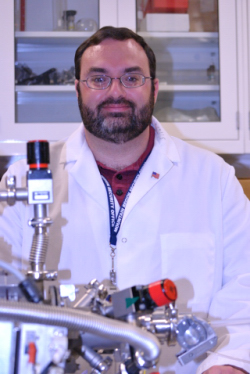
John Nowak
separated
Tropospheric Chemistry
Affiliation
CIRES
Dr. Nowak is a Research Scientist II in the Cooperative Institute for Research in Environmental Sciences (CIRES) at the University of Colorado at Boulder, and an affiliate with the NOAA Earth System Research Laboratory (ESRL). He joined the Laboratory in 2001 as a National Research Council Post-Doctoral Research Associate after receiving degrees in geophysical sciences and atmospheric sciences from the University of Chicago and the Georgia Institute of Technology. His principle research interest is the measurement of atmospheric trace gases to advance the understanding of chemical transformations and transport in the atmosphere, and the impact of these processes on the ecosystem and human health. His research efforts concentrate on the development, characterization, and deployment of Chemical Ionization Mass Spectrometry (CIMS) instrumentation for airborne measurements of tropospheric trace gases along with analyzing the data and interpreting the results. Dr. Nowak is the primary investigator for the ammonia CIMS instrument in the Tropospheric Chemistry group. He is interested in the tropospheric distribution of ammonia, characterizing ammonia emissions from anthropogenic, agricultural, and biogenic sources, and understanding the role of ammonia in aerosol formation and growth in the troposphere. He has participated in many NOAA and NASA airborne field programs. In addition to measuring ammonia, Dr. Nowak has used different CIMS techniques for airborne measurement of other trace gases, such as nitric acid, sulfur dioxide, bromine, and dimethylsulfoxide.
Education
Ph.D., School of Earth and Atmospheric Sciences, Georgia Institute of Technology
B.A., Geophysical Sciences, University of Chicago
Research
Source and Emissions Characterization: Identification of trace gas point and area sources and characterization of their emissions to improve emission inventories and study the impact of these sources on regional and local air quality.
Aerosol Formation and Composition: In-situ observations of the relationship between trace gases and aerosol formation and the development of new techniques to measure aerosol composition.
Mass Spectrometry Instrumentation: Development and application of mass spectrometry techniques, such as chemical ionization and ion trap mass spectrometry, for precise, fast-time response atmospheric trace gas measurements.
Heterogeneous Chemistry: Study of reactions occurring inside or at the surface of aerosol droplets and their potential impact on air pollution formation.
Current Topics
Research
- Ammonia sources in the California South Coast Air Basin and their impact on ammonium nitrate formation (CalNex 2010)
- Ammonium nitrate formation over Houston, TX (TexAQS / GoMACCS)
- Distribution and sources of ammonia over the northeastern United States (NEAQS-ITCT 2004)
- Airborne measurements of bromine containing halogen species in the Arctic troposphere (ARCPAC)
Instrument Development
- Airborne measurements of sulfur dioxde by CIMS
last modified: May 08, 2012

